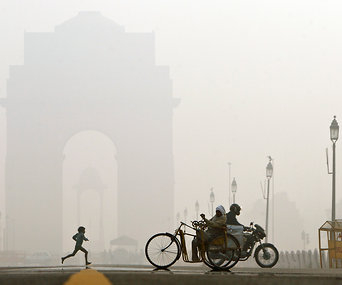Millions at risk as bad air finds new home
 Thick clouds of toxic pollution are strangling the population of New Delhi, which may have become the world’s most polluted city.
Thick clouds of toxic pollution are strangling the population of New Delhi, which may have become the world’s most polluted city.
Authorities are considering a range of measures to cut down the impacts caused by the city’s eight million cars, massive construction works, industrial kilns and other sources of pollution.
Recent figures published in Yale University's Global Environment Performance Index showed Delhi had the highest concentration of harmful particles smaller than 2.5 micro metres in diameter (PM 2.5). New Delhi has even outstripped Beijng’s rates.
PM2.5 particles are small enough to enter the body and interfere with the functioning of the lungs, they are associated with chronic bronchitis, lung cancer and heart diseases.
Environmental groups are urging authorities to consider pollution reduction measures, such as a restriction on the number of vehicles on the roads.
Chandra Bhushan, from the New Delhi Centre for Science and Environment (CSE), says the city’s air quality is worse in winter.
Bhushan says the thick blanket of airborne grit and dust slows traffic, forces people indoors whenever possible and creates a marked increase in hospital admissions.
“If the same kind of air quality was there in some of the European countries, they would have stopped the city,” he said.
He says no-one is proud of beating Beijing’s pollution rates.
“It's a very bad honour to have,” he said.
“In fact, what we see in the last 10 years that Beijing has tried to do much more to combat air pollution, largely because of huge international media highlighting the issue about Beijing air pollution.”
India was ranked 126 out of 132 in a recent World Bank report on environmental performance. It came in last for air pollution.








 Print
Print